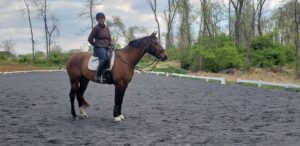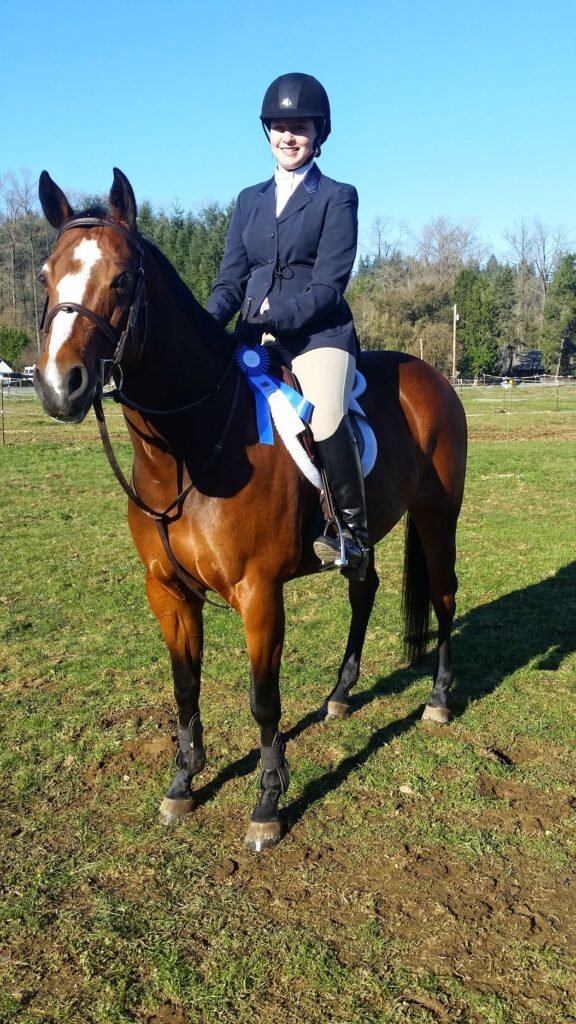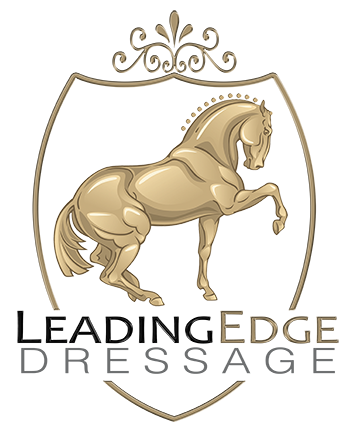Obedience is an interesting thing between a horse and rider. Sometimes even when we feel like our horses are behaving well, a situation will arise that makes you wonder what went wrong. Those moments when your horse blatantly blows you off or has “other plans” when you request something can be a surprise to many riders. Often the subtle signs of an obedience breech have been brewing for a while and your horse was testing you in a way that you did not see. Here are a few of my favorite little check in exercises to see how your horse is rating ion the scale of obedience.
The first one is at the mounting block. When you position your horse next to the block, does he stay put? Can you drop the contact, step in the stirrup, and swing your leg over without him moving? Once you are seated or maybe even before, does he walk off, ready for work? An obedient happy horse will wait. They will stand next to the block, no contact on the reins, and wait while you mount. They will stand quietly while you get seated and organized and wait for you to ask them to walk off. If your horse does not do this, they are taking over your ride before it even starts. For more on fixing this see my post “Does your horse stand quietly at the mounting block”
The second one is at the halt. Ask your horse to halt and drop the reins. Your horse should stand patiently and wait for what is next. If there is obedience missing in their routine, they often will walk off. The absence of contact does not mean go. If you have not made this clear to your horse, they simply may not know this is a rule. Quietly pick up the rein and halt the horse and drop it again. And again, and again, until when you do your horse stands waiting. They should own the piece of dirt they are standing on, keep putting them back in that same spot. This simple exercise should be a regular check in while you ride. Gentle but clear reminders to wait for your request place you in the leadership role early on.

My third favorite exercise is what I call “The opposite game”. Riding on a straight line, as I approach the end of the arena, I notice which direction my horse thinks I am going. Then I ask him to go the opposite direction. If you really pay attention to your horse, you can see that they plan far ahead which way they are turning and will execute their corner before asked. This is interesting to me. They really do teach their riders to go their favorite direction. I used to have a lesson pony that would only go right if the students were not paying attention. I would ask them to change direction, the pony would turn and cut across the arena diagonally until she was going to the right again. The young rider would feel they changed direction but would still be going right. She was a crafty pony and most of the time the kids did not even notice that they had been turned around again. It always made me laugh. But she really did teach these kids to notice things. So many of them went on to become great riders. I owe it to that crafty “Shady Lady”.

Not only does this help your horse become a team player, and put you in the leadership role, but it also gives the rider the opportunity to ride the corners how you want, not how your horse wants. It sets a precedent to the rest of your ride and every ride after. A horse will take over and lead you in subtle ways, and they will choose the easiest route or method. This is not always the best for them. They will often go crooked, or lack proper bend, or get tense and rush off. They view the rider as a follower not a leader, which in horse language means they are responsible for keeping themselves safe from the predators of the world. (The foundation of all horse psychology is based on this)
